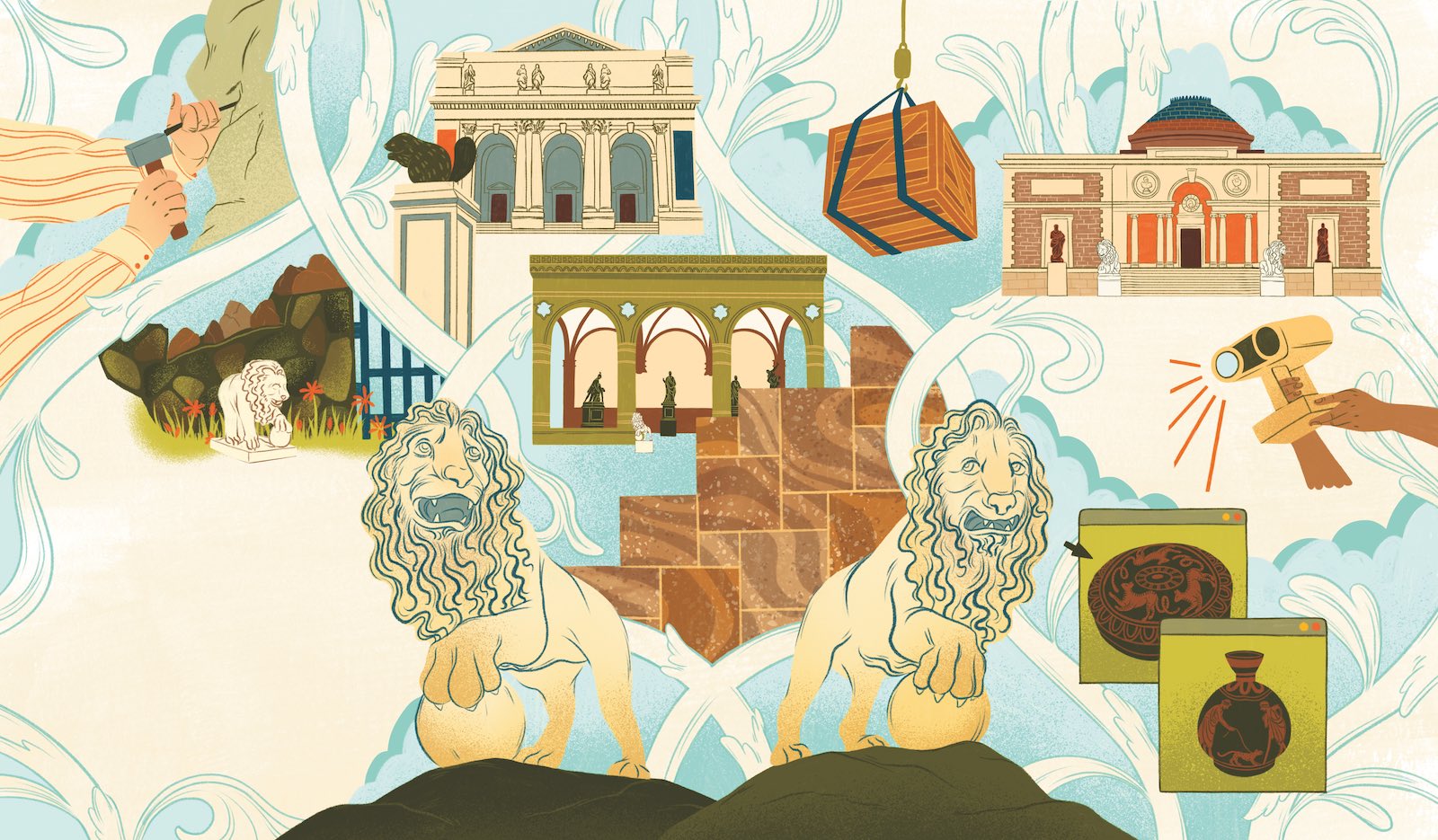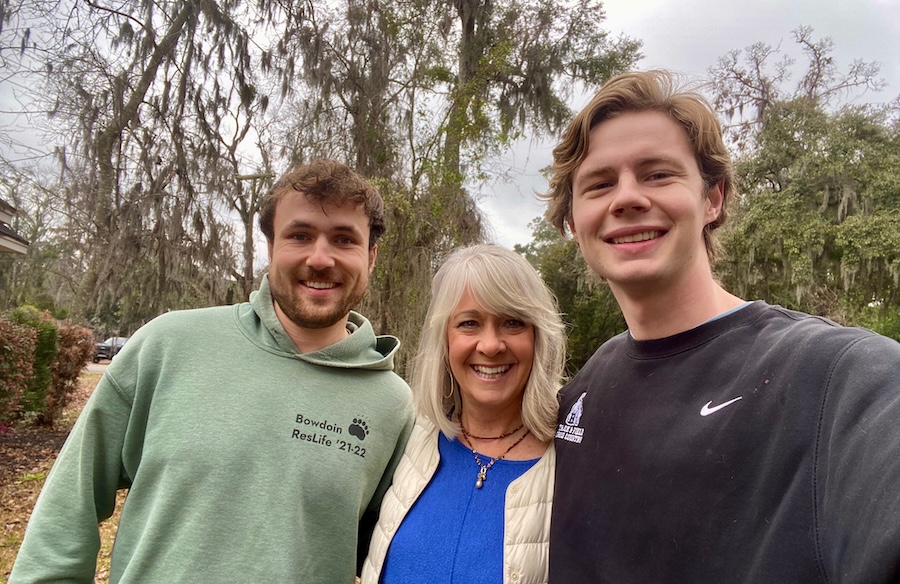A Look at the Lions
By Bowdoin MagazineA staff member scans every detail of the lions to make a virtual 3D version, inspiring us to take a close look at the beloved guardians of the Quad.

Lions can be found guarding public buildings, flanking bridges and gates, and standing in for royalty, power, and might throughout the world. At Bowdoin, the lions on the loggia, or terrace, of the Walker Art Building fill more of a kindly role. They quietly watch students gather on the steps to study or eat or talk with friends; they forebear generations of students and children climbing on their backs for fun and photographs; they celebrate every graduate at Commencement. Earlier this semester, David Israel P’25, who is trained as an art historian and artist, and who works in Bowdoin’s academic technology and consulting group, embarked on a project to scan the lions using a portable scanner to capture thousands of images and textures. As Israel describes it: “There is some serious ‘magic’ in the software that interprets it all and lets us build up the final models.”
Bowdoin's lions are copies of marble sculptures known as the Medici lions—one of which is second-century Roman and the other a sixteenth-century pendant to the first, carved by Flaminio Vacca and commissioned by Ferdinando de'Medici.
Travelers to Florence, Italy, can visit the Medici lions at the Loggia dei Lanzi in the Piazza della Signoria, where they have been since 1789.
Observant viewers can see downsized copies of the Medici lions in the garden of the Corleone family estate in the movie The Godfather.
David Israel P'25 has been using an Artec LEO scanner to recreate a 3D scan of the lions. Using the device, which Israel says "looks a little like the Pixar character WALL-E," it took an hour or two to scan the lions and "a good day" to get the model rendered.
There are copies of the Medici lions throughout the world. In the US, the most famous are the New York Public Library's Patience and Fortitude. When they were unveiled in 1911, some thought they should have been beavers or bison.
Bowdoin's lions are carved not from marble but from travertine, a light-colored calcareous rock that is a type of limestone deposited around mineral springs.
Bowdoin's lions were removed and housed in a safe place during the 2005-2007 renovation of the Walker Art Building.
During COVID, Israel and others scanned more than 100 objects in the BCMA collections and made them available for professors to share with students who were studying remotely.
Both of Bowdoin's lions place a paw on a sphere, but the lions are not identical, and their faces are quite different.
Here's a look at the final results of the scanning project, courtesy of David Israel P'25, senior producer for academic new media in Bowdoin's academic technology and consulting group.

This story first appeared in the Winter 2022 issue of Bowdoin Magazine. Manage your subscription and see other stories from the magazine on the Bowdoin Magazine website.



